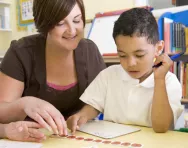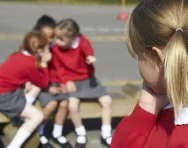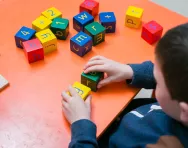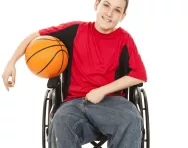Important update from TheSchoolRun
For the past 13 years, TheSchoolRun has been run by a small team of mums working from home, dedicated to providing quality educational resources to primary school parents. Unfortunately, rising supplier costs and falling revenue have made it impossible for us to continue operating, and we’ve had to make the difficult decision to close. The good news: We’ve arranged for another educational provider to take over many of our resources. These will be hosted on a new portal, where the content will be updated and expanded to support your child’s learning.
What this means for subscribers:
- Your subscription is still active, and for now, you can keep using the website as normal — just log in with your usual details to access all our articles and resources*.
- In a few months, all resources will move to the new portal. You’ll continue to have access there until your subscription ends. We’ll send you full details nearer the time.
- As a thank you for your support, we’ll also be sending you 16 primary school eBooks (worth £108.84) to download and keep.
A few changes to be aware of:
- The Learning Journey weekly email has ended, but your child’s plan will still be updated on your dashboard each Monday. Just log in to see the recommended worksheets.
- The 11+ weekly emails have now ended. We sent you all the remaining emails in the series at the end of March — please check your inbox (and spam folder) if you haven’t seen them. You can also follow the full programme here: 11+ Learning Journey.
If you have any questions, please contact us at [email protected]. Thank you for being part of our journey it’s been a privilege to support your family’s learning.
*If you need to reset your password, it will still work as usual. Please check your spam folder if the reset email doesn’t appear in your inbox.
Managing epilepsy at school

All parents want to know that their children are safe and well looked after at school. And if your child has a serious medical condition like epilepsy, it’s natural to be concerned about how their school will cope with it.
Epilepsy is often diagnosed in childhood, with around one in every 240 children affected.
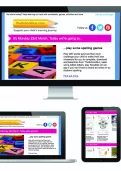

Start a unique learning programme!
- Weekly programme for each school year
- Worksheets sent direct to your inbox
- Keeps your child's learning on track
Some have convulsive seizures with symptoms such as jerking or twitching, muscle stiffness, collapse and loss of consciousness.
Others have more subtle seizures, such as absence seizures, where they lose consciousness for a few seconds but don’t fall. It often looks like they’re daydreaming or have ‘tuned out.’
Whichever type of epilepsy your child has, it’s vital to make sure their school knows how to manage their condition so they can be kept safe.
How epilepsy can affect children at school
Many children with epilepsy take medication that keeps their condition under control, and rarely have seizures.
But a significant number of children still have seizures despite being on medication. This means they may have seizures at school, which can affect their learning.
‘Children who have frequent absence seizures may be disorientated and lose track of what’s going on in class, leading to gaps in their learning,’ says Kathy Bairstow, Senior Advice and Information Officer at Epilepsy Action (free helpline 0808 800 5050, or email [email protected]).
Teachers might also mistake absence seizures for not concentrating, listening or paying attention. ‘Sadly, this can lead to them being labelled as a “naughty child” who’s ignoring what the teacher says,’ Kathy explains.
Needing time off school can be a problem for children with epilepsy, and lead to them missing out on key learning. This might be the case if they have frequent medical appointments, or need time to recover after a seizure.
‘Some children, particularly those who have convulsive seizures, need several hours to recover afterwards, and may need to go home,’ Kathy explains.
‘But even with the less dramatic types of seizure, teachers may be nervous about keeping the child at school afterwards and send them home, when in fact they could remain in school.’
As well as epilepsy itself having a potential impact on children’s learning, their medication can have an effect, too. ‘Some epilepsy medications affect cognition and memory, which can be a challenge for children,’ says Kathy.
Children might also feel self-conscious about having epilepsy, especially if they have convulsive seizures that look frightening to others and can result in them losing bladder or bowel control.
This can have an impact on friendships, and could even lead to the child becoming reluctant to go to school. This can then become a vicious circle, as stress itself can trigger epileptic seizures.
Managing your child’s epilepsy at school
The good news is that there’s a lot that schools can do to help their pupils manage their epilepsy. ‘Most parents that we speak to feel that their children’s school does a good job,’ says Kathy.
Indeed, schools are obliged to put measures in place to ensure that children with epilepsy (and other conditions) can take part in school life in the same way as any other pupils.
Here are some of the things that can help your child – and their school – to manage their epilepsy.
Produce an Individual Healthcare Plan (IHP)
The Individual Healthcare Plan is a document that sets out information about your child’s condition and specific needs, covering things like what type of epilepsy/seizures they have, what to do during a seizure, the medications they take, and so on.
An IHP should be produced jointly by you, the school, and a specialist such as your child’s epilepsy nurse or consultant, and should provide all the details the school needs to understand and manage your child’s condition.
Consider requesting an Educational, Health and Care Plan (EHCP) assessment
Some children whose needs are more significant are entitled to an EHCP, which formalises things such as the special educational provision and health provision that they need. They are also allocated a budget to provide for their needs: for example, this could finance a dedicated member of support staff to help your child at school.
If you would like your child to be assessed for an EHCP, contact your local authority.
Manage their medication
Most children who take anti-epileptic drugs are able to take them before and after school. If your child does need a dose during school hours, a member of staff should be allocated this task, and you’ll need to fill in a form stating what medication they need, the dose, the frequency etc.
Some children also need emergency medicines, or rescue medicines, to be given if they have a long-lasting seizure or a cluster of seizures. These should only be administered by a member of school staff who has been trained by a professional such as an epilepsy specialist nurse.
Your child should have a care plan, saying when emergency medicine is needed, how much they need, and when an ambulance should be called.
All medications should be stored securely, and the school should record the details of any medications given during school time.
Explain what to do during a seizure
You should make sure the staff at your child’s school know what to do during a seizure and afterwards. You may feel confident to explain this yourself, or you could ask for help from your child’s epilepsy specialist nurse.
Epilepsy Action also has free online training videos to help schools understand how to cope with seizures.
Know when to call an ambulance
Most of the time, there’s no need to call an ambulance if a child has a seizure. You should, however, make sure the school knows when to dial 999 (for example, if your child has a single seizure lasting more than five minutes, a cluster of seizures without recovering in between, or is seriously injured during a seizure).
Be aware of triggers
If your child has known epilepsy triggers, make the school aware of them so they can try to avoid them as far as possible.
Have a home/school link book
This enables parents and school staff to communicate with each other about the child’s epilepsy, for example by noting if the child has had a seizure at school or at home, whether emergency medication was given, etc.
Explain epilepsy to other pupils
‘Being bullied because of epilepsy is thankfully much rarer than it was 20 years ago,’ says Kathy. However, it’s still a good idea to explain epilepsy to other pupils: Epilepsy Action provides resources for primary school pupils.
Children should also be taught to get help from an adult straight away if your child has a seizure.
Organise support for potentially risky activities
Equality laws mean your child should have the same access to school activities as other pupils.
If a potentially risky activity is planned, such as school swimming lessons or a residential school trip, a risk assessment should be done, and where possible, reasonable adjustments made to allow your child to participate.
This could mean, for example, having a dedicated member of staff to accompany your child in the swimming pool or to take care of them if they have a seizure on a school trip.
Attend regular reviews
Keeping your child’s epilepsy under control is vital, so attend all your child’s regular appointments and reviews. ‘Because children grow so fast, they can outgrow their medications and require regular reviews of their dosage,’ explains Kathy.
Ask about access arrangements
If your child’s learning is affected by their epilepsy or their medication, they may be entitled to extra support in formal exams like SATs, such as additional time or a prompt. Speak to your child’s teacher if you would like this to be considered.
Help your child understand their condition and express any worries
Having epilepsy can be a big deal for a child, so it’s important to explain the condition and its implications in an age-appropriate way, talk about what to do if they have a seizure at school, and give them opportunities to chat about how they’re feeling.
Epilepsy Action has some great child-friendly animations to help kids understand more about epilepsy.
‘We worked together to gain each other’s trust and confidence’
Rachael King is mum to three children with epilepsy: Jenson, seven, William, five, and Darcie, four.
'Having three children with epilepsy means we have very busy lives, with lots of hospital appointments, seizures and tests, but we don’t want their epilepsy to ever hold them back in life.
'The children’s school is exceptional in dealing with their epilepsy. The staff are all very understanding about the children’s needs and what to do if they have a seizure. They will write in their planners, and ring me if they have a seizure or if they have other concerns.
'It’s very important to keep the school updated about any changes in medication, seizures at home, appointments and so on. I’ve also shown the staff videos of the children’s seizures so they’re aware of what to look out for.
'The staff have regular training on what to do if my children have a seizure, and how to use the rescue medication for prolonged seizures. William was even able to go on his first residential with school recently: his teacher reassured me that he would be okay and watched him on a camera monitor overnight to ensure he stayed safe.
'The children have lots of appointments to attend, and when they’re unwell or in hospital, they have to miss school. I always do my best to help them catch up on any work missed.
'I know how difficult it is to send your children to school and let other people look after your babies, but by working together you can gain each other’s trust and confidence and forge a partnership together. From one epilepsy parent to another, keep fighting this battle and doing your children proud.'
Follow Rachael’s journey on Facebook @ourepilepsyjourney and on Twitter @3littlewarriors
Please note: the image accompanying this feature is posed by models.

